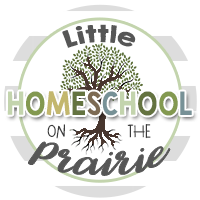Apr162018
Apr
16
2018
16 April 2018
Exploring Creation with Human Anatomy and Physiology Review
April 16, 2018
 When I first began homeschooling I thought it would be so easy finding a science curriculum. It was more difficult than I imagined finding a science curriculum
that met my requirements for K-6. I wanted a full year science curriculum that
was in-depth and Biblically centered with creation. What I found frustrating was
that several other Biblically centered science curriculum's didn’t have quality
experiments to go along with teaching about God’s creation with younger kids. The ones that did where secular science curriculum. Finally, I was told introduce to Apologia! I've been hooked since on Apologia.
When I first began homeschooling I thought it would be so easy finding a science curriculum. It was more difficult than I imagined finding a science curriculum
that met my requirements for K-6. I wanted a full year science curriculum that
was in-depth and Biblically centered with creation. What I found frustrating was
that several other Biblically centered science curriculum's didn’t have quality
experiments to go along with teaching about God’s creation with younger kids. The ones that did where secular science curriculum. Finally, I was told introduce to Apologia! I've been hooked since on Apologia.
I love it even more
when I can teach a topic in science without knowing a lot about a specific topic.
Apologia makes me look and feel like I’m a pro that is one of many reasons I
have been using this science curriculum for several years. For the last several
weeks we have been doing Exploring Creation with Human Anatomy and Physiology in our homeschool.
Exploring Creation with Human Anatomy and Physiology is
designed to be used with kids from K-6. I feel that 7th graders
would benefit from this also. This will appeal to kids from all learning
methods. There are lots of hands on activities that make learning human anatomy
fun.
Exploring Creation with Human Anatomy and Physiology Text
has 14 chapters. Each chapter is dedicated to a certain topic on the human body.
Chapter 7 for example is “Life in the Blood” and covers 20 different topics pertaining
to the blood. Throughout the chapter there are several “Try This” that has
activities & experiments to support the concept you are learning about.This
is great for hands on learning and my kids love the activities. At the end of
each chapter you have an experiment which is a much more detailed experiment
than the “Try This” activities.
The textbook is colorful and has several illustrations on
each page. This is a complete science curriculum that has everything you need
to learn about the human anatomy and physiology. The only thing you may want to
purchase outside of the curriculum is a lab kit. At the front of the text book there
is a list of supplies needed for each lesson broken down by lesson. The majority
of the items are basic household items.
Exploring Creation with Human Anatomy and Physiology can be used
independently with older elementary kids. I like being able to stop at the segments
and discussing them. I also like that when I’m reading it out loud I understand
the activities and experiments better to talk about them more. Honestly, we do a
bit of both in our homeschool. Some days my 12 year old son has to work
independently on science. There are experiments like taking a tape measure and measuring
out 20’ to get and ideal how long your intestines are. Other experiment we do
together with his sister who is also working through this curriculum.
There is even a link for Book Extras that give you additional information outside of the text.
Both
books are spiral bound notebooks. The Junior Notebooking Journal has a larger
space for writing for younger children. The activities also require less
writing. There are several fun coloring pages throughout the journal. The
content is the same in both notebooking journals with the exception that the
Junior Notebooking Journal is created with younger children in mind.
The Notebook Journal has
a suggested schedule that has you doing lessons two day a week with completing
the course in 28 weeks. It’s also easy to implement doing 4 or 5 days a week.
It’s just a suggested schedule that you can adjust it to fit your schedule.
They also remind you that you don’t have to do every task in the notebook
journals. This
is a consumable book and you will need one for each student.
Fascinating Facts-this goes over many facts that the lessons information you can add to the journal. The Junior Notebooking Journal may have more diagramming parts with less writing. The diagramming will include more clues to help out younger students. The other journal will have more writing activities for the topic.
Each lesson has a “More to Explore” in which you can do more research. An example is in Lesson 8 would be “What does the Bible Say about the Heart?”, “Find your resting heart rate”, “Make a human heart out of clay”, “Heart dissection” and “Writing a Story”, and even some book suggestions. Depending on which Notebook Journal you are using those activities will vary. The Junior Notebook Journal has all the same material in the lessons its just more lower elementary or children who may not write as much. Both have mini books, scripture copywork, crossword puzzles, and several other hands on projects.
The back of the
journal has all the blank templates you need for completing the projects.
If you put the notebook journals side by side you can see some of the differences.
The top is the Junior Notebook Journal and already has the assignment drawings available while the bottom one you need to add your own diagram in which you can copy from the diagrams on the right of the circles.
The left side is the Junior Notebook Journal and has some hints to help you label the eye parts.
Exploring Creation with Human Anatomy and Physiology MP3 Audio CD is Jeannie Fulbright speaking and is the entire textbook in
audio form. The words aren’t all verbatim to the textbook as some of the words
may vary. That won’t inhibit your child following along in the textbook with
the audio. This is a great way for younger children to feel some independence
and a great way for older kids who are struggling readers or even disabilities. I like that she reads slowly and clearly to follow along. Your told what page your own and what segment to follow from the text with.
How did I use Exploring
Creation with Human Anatomy and Physiology in our homeschool?
For the last several weeks we have been
learning a lot about the human body. My kids love that we have learned about the history of anatomy
and Physiology in the ancient world also. I love that we are constantly reminded of what an amazing God we have throughout the text. I love the quality experiments and the fun activities.
I used the suggested schedule loosely.
We typically worked 3-4 days a week on science. On the fourth day we did all
the experiments and activities together. I liked that I could glance at the
schedule and see what went together in the notebook journals and the textbooks
and it helped me plan what I needed for the week. Whether you follow the suggested schedule or not. It's helpful putting the activities together quickly.
We mummified apples testing out several
types of mediums to see which substance would preserve the apple the best.
We made an edible cell to learn about
the different parts of a cell and had to identify each part of the cell.
Little Man learned how to read the labels on products we eat and count the calories.
We
discovered about our skeletons, muscles, tendons, our teeth, salvia, liver,
intestines, and so much more.
We read the textbook
together most days. We worked on all the activities and experiments together. We
would stop after segments and discuss the topics together.
Some days they had to
work independent while I had other task that I needed to take care of. My 12 year old son
is very independent and he had no problem working independently. He worked on the Exploring Creation with Human Anatomy and
Physiology Notebooking Journal by himself and I helped him find the correct templates
and was available when he needed me.
My 15 year old
daughter has a lot of special needs and really struggles with reading. On days that she needed to work
independently I would set her up with the Exploring Creation with Human Anatomy
and Physiology MP3 Audio CD and have her follow along in the textbook. I love
that this gave her the ability to complete science with minimum assistance from
me. I always try to gently push her to work independently to build up her confidence. She liked that she had an option to continue on in her lessons and not have to wait for me. We still came together to do the experiments and activities together. Usually I do all the experiments at the end of the week. It just works better for my family to go back and do them on one day. Some of the "Try This" experiments depending on what they entailed determined whether we did them immediately or at the end of the week..
My daughter didn’t
use the Exploring Creation with Human Anatomy and Physiology Junior Notebooking
Journal. This is actually a great fit for her ability but, her arthritis has
been really flared up and I try to keep certain task to a minimum with her.
I love that Apologia and would recommend Exploring Creation with Human Anatomy and Physiology.
Other reviewers are
reviewing this also. Click on the banner below to see the other reviews.
Social
Media:
Labels:TOS Crew Reviews
Subscribe to:
Post Comments
(Atom)


Search This Blog
Grab my button!

Followers
Powered by Blogger.
Homeschool Planet
HSP Free Offer Email for REVIEWERS
Popular Posts
-
When I was in Israel, one of the most surreal moments was going to the Temple Mount. It’s something I will never forget. We nearly didn’t ge...
-
We are learning about the Viking in our history studies. What better way the enhance the learning by adding a craft to the mix. With my kid...
-
This is my first time to try and blog through the alphabet. All kinds of amazing words start with the letter A. For some reason I keep comi...
-
Disclaimer: I received a FREE copy of this product through the HOMESCHOOL REVIEW CREW in exchange for my honest review. I was not required t...
-
About the Book Book: Capture the Moment Author: Suzanne Woods Fisher Genre: Contemporary Romance Release date: May 6, 2025 Kate Cunn...
Labels
20p12.1
4-H
About Me
American History
Ancient History
Autism
Beekeeping
Beekeeping 101
Bible
Blog Hop
Blogging
book
Book reviews
Camera Shots
Classroom
Coding
Curriculum
Disclosure Policy
Egypt
Entomology
Experiments
Family
Feast of Tabernacles
Field Trips
Free Printables
Garden
Geography
Giveaway
Giveaways
Hanukkah
Health
Hebrew
High School
History
homemade
Homemade Bread
Homemaking
homeschool
Homeschool crafts
Homeschooling
Honey Products for Sale
Honey Recipes
Horse Therapy
iPad & Apps
Israel
Just For Fun
Juvenile Arthritis
Kids
Lapbooks
Life Cycle
Life in general
Math
Medieval History
My kid said...
Organizing
Organizing/homeschooling
Our curriculum
Our Week Through the Lenses of a Camera
Passover
Photography
Prayer
Purim
Random Pictures from my Kids
Recipes
Review
Review Policy
Reviews
Rosh Hashanah
Science
Scripture
Sensory Processing Disorder
Shabbat
Shavout
Simchat Torah
Sonlight
Special Needs
Special Needs High School
Special Needs Product Reviews
STEAM
STEM
Stuff
Tish B’Av
tos
TOS Crew Reviews
Tu Bishvat
Viking History
Week in Review
Wordless Wednesday
Workboxes
Yom Ha'atzmaut
Yom Hashoah
Yom Hazikaron
Yom Kippur




































I love all of the pictures you took!
ReplyDelete